#80s aidoru
Text
I hate the fact that college sucks the life out of me smh so here's a cute photo of moritaka chisato to
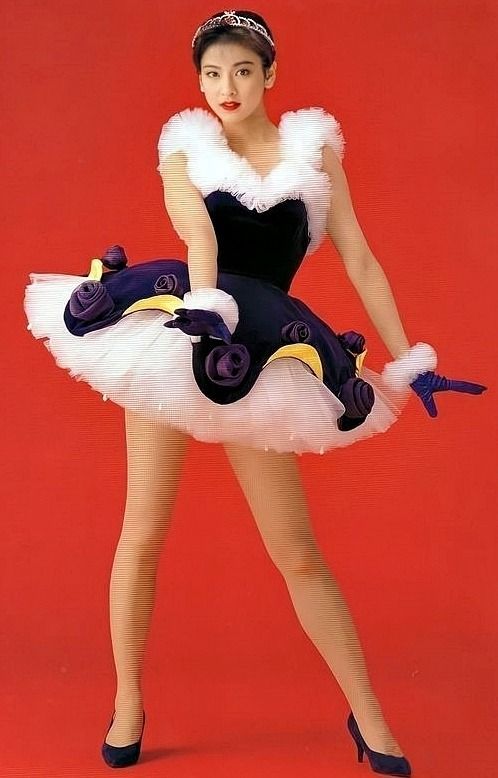


#moritaka chisato#jpop#80s jpop#showa aidoru#showa era#city pop#dance pop#idol#music#pop#japanese singer#japanese music#80s#90s#nostalgia#anemoia
7 notes
·
View notes
Text
I Opened Livedoor and The First News on The Homepage is About Akina Nakamori
I opened Livedoor yesterday and the first news that appeared on the homepage was one of my favorite Japanese artists, Akina Nakamori. She has rarely appeared in public since 2014.

Taken on Friday, 5 April, 2024 at 01:56 with Samsung Galaxy A10s. That is my sister's laptop.
#sofiaflorina#ソフィアフロリーナ#livedoor#ライブドア#中森明菜#citypop#city pop#city pop music#city pop song#japanese city pop#city pop japan#昭和のアイドル#昭和アイドル#昭和レトロなアイドル#日本のアイドル#アイドル#日本の歌手#歌手#80年代アイドル#akina nakamori#japanese idols#japanese singer#aidoru#livedoor news#random#random post#random tumblr#just random#just random stuff
0 notes
Text
Samishii Nettaigyo (“Lonely Tropical Fish”)
youtube
“With my heart on the waves, I start swimming, but I can’t catch up to the ideal in your head.”
OR: A lovesick girl with a colorful 80’s sense of fashion waits by the poolside for a guy that doesn’t show.
Stop hoshikuzu de kami wo kazari
Non-stop yasashii me wo matsu wa PUURUSAIDO
Stop With my hair decorated with stardust
Non-stop I wait for tender eyes by the poolside
ZUKI-ZUKI setsunaku furueru mune
maboroshi demo ii aitai no ni
Pain throbs inside my heart, an aching, quivering chest–
It doesn’t matter if it’s just an illusion I just want to see you
Heart on wave Heart on wave
anata wa konai
watashi no omoi wo JOOKU ni shinaide
Heart on wave, heart on wave
You don’t come
Don’t treat my feelings like a joke
Lonely YURAYURA Swimmin’ YURAYURA Dreamin’
ai ga yureru Stop Stop
Lonely, swaying in the water, swimmin’ Swaying, swaying, dreamin’
My love’s left shaking Stop Stop¹
Love hanagara no mizugi dake ga
Love me medachi sugite nakitaku naru no
Love My flower-printed swimsuit is
Love me The only one sticking out like a sore thumb, I feel like crying
JIRI-JIRI kogeteru kono itami wo
tsumetai mizube ni sotto ukabete
The scorching sun leaves a burning pain that I
Gently take afloat into the cold waterside
Heart on wave Heart on wave
oyogidasu kedo
anata no yume ni wa oitsukenakute
Heart on wave, heart on wave
I start swimming, but
I can’t catch up to your ideality²
I can’t nee konna ni kurushii no
naze naze anata ja na kya DAME na no
I can’t Hey, I’m hurting inside so much
Why is it, why is it that nobody but you will do?
Lonely YURAYURA Swimmin’ YURAYURA Dreamin’
ai ga yureru Stop Stop
Lonely, swaying in the water, swimmin’ Swaying, swaying, dreamin’
My love’s left shaking Stop stop
Heart on wave Heart on wave
anata wa konai
watashi no omoi wo JOOKU ni shinaide
Heart on wave, heart on wave
You don’t come
Don’t treat my feelings like a joke
Heart on wave Heart on wave
oyogidasu kedo
anata no yume ni wa oitsukenakute
Heart on wave, heart on wave
I start swimming, but
I can’t catch up to your ideality
---
¹ Yureru means both swaying (side to side, the way fish “swim” through the water) and shaking, so the same verb is used throughout the stanza.
² The word sung is yume (“dream”), but the kanji used is 理想 (“ideal”).
As a side note: If this song sounds familiar, that’s because it’s been covered by W, MAX, and Kikkawa You and Kaze Hikaru Fukarou.
There’s also two different English covers (with vastly different lyrics): one by the Nolans called Tidal Wave, another by Yoo Yoo called SAMISHII NETTAIGYO.
#Samishii Nettaigyo#Wink#single: Samishii Nettaigyo#lyrics#translation#Lyricist: Oikawa Neko#Composer: Ozeki Masaya#Arrangement: Funayama Motoki#80s aidoru#old school aidoru#aidoru songs referencing animals#release date: 07/05/1989#iconic aidoru songs
8 notes
·
View notes
Text
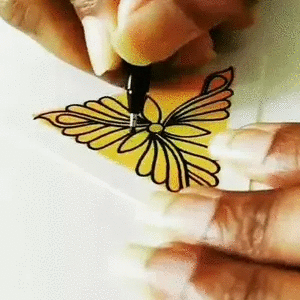
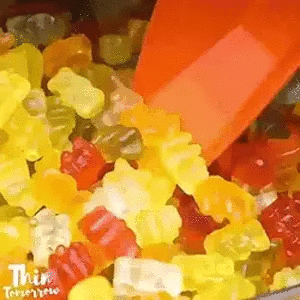
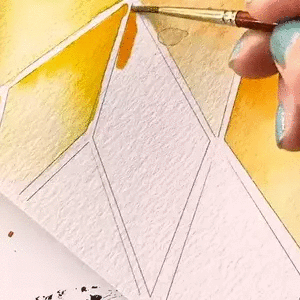

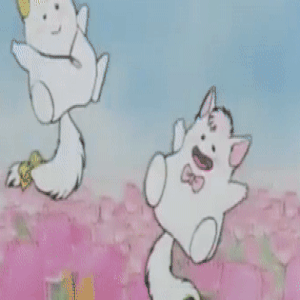



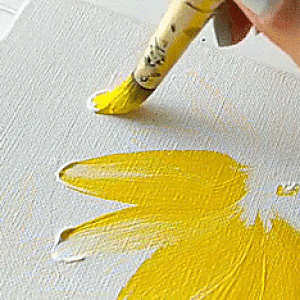
Kakimaru Stimboard
🏵️ / ✏️ / 🏵️
✏️ / 🏵️ / ✏️
🏵️ / ✏️ / 🏵️
#kakimaru#kakimaru pastel yumi#pastel yumi kakimaru#pastel yumi#magical idol pastel yumi#pastel yumi the magic idol#mahou no idol pastel yumi#mahou no aidoru pasuteru yumi#mipy#pytmi#mnipy#mnapy#anime#80s magical girl#magical girl#mahou#mahou shojo#mahou shoujo#80s#80s anime#stim#stim board#stimboard#magical girl mascot#magical girl companion#fandom#fandom stimboard#yellow#orange#red
12 notes
·
View notes
Photo

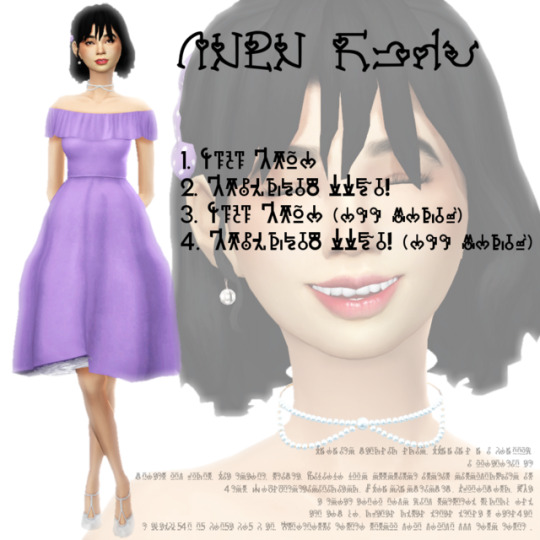
Legendary 80s S-Pop Idol Yamaguchi Taeko! Her single “Nubu Redo” was up on the charts over 30 years ago.
hair - dress - necklace - earrings - makeup
thanks to creators @pickypikachu @pralinesims @rigel-sims
--
Lately I’ve been obsessed with 80s Jpop music and have been listening to it non stop. As a result, I made this sim and this *fake* single cover as a tribute to it!
if ur wondering, bow and shoes are from dwp
#sims 4#the sims 4#jpop#heisei#80s#idol#aidoru#ts4#80s idol#80s idols#s4#ea#maxis#kawaii#cute#japanese idol#idols#j-pop#single#album art#sims art#sims oc#excuse the horrible back cover i got lazy lmao#maxis match#ts4mm#my sims
5 notes
·
View notes
Photo
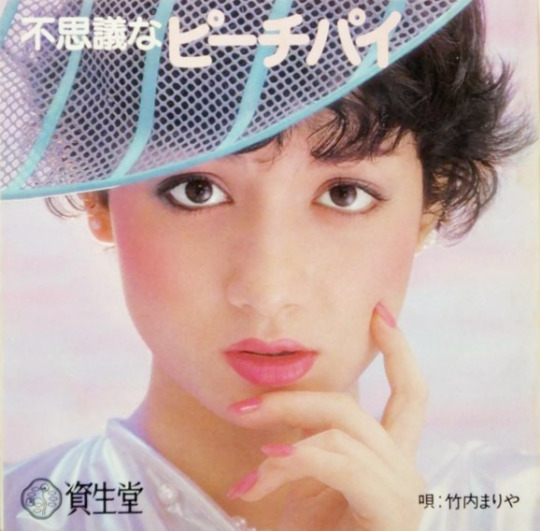
#80s idol#80s#80s japan#idol#japanese idol#aidoru#retro#retro japan#japan#vintage#vintage japan#mariya takeuchi#takeuchi mariya#japanese fashion#j fashion#jfashion#kayokyoku#u#kawaii#pink#pink aesthetic#pastel#pastel aesthetic
31 notes
·
View notes
Video
🌟PA-PA-PAJAMA JAMA DA 🌟
Let’s express our naked feelings, darling!😉💓
.
.
This full dance will be up on my youtube channel, “ Serepuff” sometime soon! link in bio!! be sure to subscribe so you don’t miss it 💖💕!! Thank you @botchans for helping me film!!
https://m.youtube.com/serepuff
#cosdance#lum#うる星やつら#ラムちゃん#kawaii#majokko#youtube#magicalgirl#mahou shoujo#urusei yatsura#bunny suit cosplay#bunny lum#80s anime#bunny girl#rumic world#magical idol#idol#aidoru#rumiko takahashi#lum cosplay#bunny suit#pajama jama da#lum cosplayer#lum invader#ramu#those obnoxious aliens
130 notes
·
View notes
Photo

Source: Idol Densetsu Eriko アイドル伝説えり子
Created by GIF GYARU
#アイドル伝説えり子#Idol Densetsu Eriko#eriko#anime gif#anime gifs#star#idol#aidoru#80's anime#1980's anime#anime girl#gifs#gifgyaru#future funk#aesthetic#retro anime
47 notes
·
View notes
Link
It was in the 80s when Onyanko Club hit their streak that the term バラドル (bara-doru, or “variety show idol”) became popular, as Onyanko Club became the darling act on Japan’s ubiquitous talk show circuit. However, the term quickly died out, as the picture of purity that was supposed to be projected by idol acts didn’t gel with the other uses of the term. It came back into vogue in the late 1990s and early 2000s as groups like Morning Musume and Hello! Project began to define the structure of idol groups as we know them today: a large group of young women who fight to move up the ranks of the group, with members eventually “graduating” to other group projects or to solo careers. Members of idol groups are forbidden from having relationships, and forming one on the sly can lead to scandal (at best) or expulsion (at worst); members who violate this rule are also slandered relentlessly on social media by male fans.
To call the idol concept “popular” in Japan would be an understatement. The list of idol groups past and present on Wikipedia JP gives you an idea of the scale of the operation. Idol groups routinely make public appearances, the most common type being the hand-shaking event (拍手会; hakushukai), where fans can stand in line for hours to do a quick meet-and-greet with their favorite performers. The idol phenomenon has even sparked a related movement, “live idols” (ライブアイドル). Also called 地下アイドル (chika aidoru, or “underground idol”), these are young women whose job is to stir up huge followings on social media, and use their influencing power to bring their fans into shops and restaurants where they’re scheduled to appear.
Read More!
1 note
·
View note
Text
fun fact of the day : Moritaka Chisato is only 161 cm tall but because she is so photogenic and has legs for days and a model build in general, everyone (including me) assumes her to be 170cm+. Girlie is literally 3cm taller than me but looks like shes 175 minimum cuz her legs are LONG af
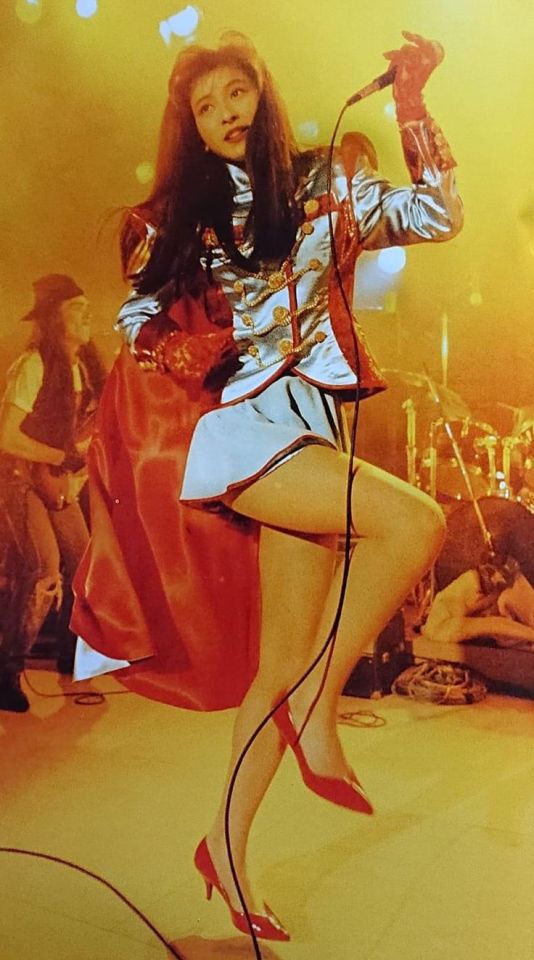
#80s aesthetic#nostalgia#retro#80s#vintage#jpop#showa aidoru#chisato moritaka#moritaka chisato#showa era#japan 80s#80s jpop
3 notes
·
View notes
Text
A Completely Incomplete History of the Magical Girl Subgenre in Manga and Anime, pt. 2
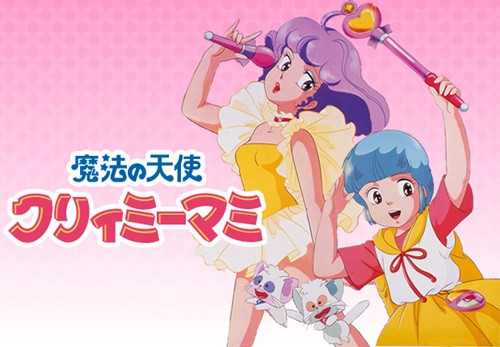
Welcome back to my occasional, completely unscientific, very self-indulgent look at the evolution of the magical girl subgenre! In my first post, I said that the subgenre can be loosely divided into three generations, starting with series like Sally the Witch and Majokko Megu-chan in the ‘60s and ‘70s. In this post, I’ll describe the second generation of magical girls: the new crop of shows starting in the early ‘80s that added some interesting elements that would transform the subgenre. Come join me below the break, gentle readers!
First, a quick recap. When talking about such a specific segment of pop culture, it’s helpful to have a definition to narrow one’s focus and keep things on track. In my first post, I attempted to define the magical girl subgenre as best I could; what I came up with was a series in which the main character(s) are girls, typically teenagers or pre-teens, who have access to magical or otherworldly abilities in what is otherwise a normal, real-world setting, which are used in conjunction with personal strengths and virtues to solve problems and/or achieve their goals, and which they must keep concealed from other people who aren’t in on the secret. Again, it’s not the most scientific definition—it’s a pretty broad net, including some works it probably shouldn’t and excluding a few it should—but it’ll do for this analysis.
Series like Mahoutsukai Sally and Majokko Megu-chan in the ‘60s and ‘70s were popular, running for multiple years and getting translated into other languages and spreading to other markets, but compared to other series they were modest successes. They didn’t have the cultural impact and staying power of other series from Toei around the same time—Cyborg 009 or GeGeGe no Kitaro in the late ‘60s, or Mazinger in the early ‘70s. And while Toei kept periodically making magical girl series—for example, Mahou Shojo Lalabel in 1980—the formula did not substantially change. The second generation of magical girl would come from a different studio, a newer contender in the world of anime: Studio Pierrot.
Toei Animation was (and is) one of the original giants of anime, having been founded in 1948. Studio Pierrot was founded in 1979 by former employees of other studios, and was trying to make a name for itself. It had already hit upon a pretty successful franchise with its adaptation of Urusei Yatsura in 1981, and was starting production on a number of new series. (Urusei Yatsura also sort of fits the “magical girl” definition, and has proved one of Pierrot’s most enduring and beloved properties, but I’d argue that it’s not nearly as important in the history of the subgenre as the series I’m about to describe. Material for a future post, I suppose.)
For one of these new series, Pierrot decided to use the strategy of “media mix,” an idea that’s been around in Japanese pop culture since at least the 1960s but which had only recently acquired a name. To quote Anime’s Media Mix: Franchising Toys and Characters in Japan by Marc Steinberg, media mix is “the development of a text across numerous media, among which anime plays a key role in popularizing the franchise; the dependence on other incarnations to sell works within the same franchise; and the use of the character as a means of connecting these media incarnations.” Basically, the idea is to build a franchise by using characters or ideas across multiple media, something that would reach perhaps its ultimate form in the Pokemon franchise a decade later. In this case, Pierrot would promote the music of a newly-acquired idol singer, Takako Ota, by making her the voice of the main character in a new anime series, Magical Angel Creamy Mami (Mahou no Tenshi Kurimi Mami), which premiered in July of 1983.
The “idol” is a specifically Japanese celebrity type, a young female starlet who generally appears on TV shows, in magazines, and especially in pop music. They’re usually presented and sold on the strength of their cute, pure, “girl next door” image, which means that their image is tightly controlled and heavily managed. It’s sort of the Hollywood idea of the “ingenue,” turned up to eleven and corporate-controlled. Now, if you remember, in my first post I noted that you can trace the development of the first magical girl series directly to the American sitcom Bewitched. These shows were putting their own spin on a fairly simple narrative: a girl with magic powers in a mundane world, dealing with simple problems and the occasional, unthreatening, cartoonish villain. In the same vein, you can trace the development of the second generation of magical girls to the introduction of this new pop-culture figure, the idol.

In Magical Angel Creamy Mami, Yu Morisawa is a normal 10-year-old girl, until the day she helps a small alien in his giant, invisible spaceship. For her help, she’s granted a magic wand with a variety of ill-defined powers and two helpers: talking cat-like creatures named Negi and Posi. Yu uses her powers to transform into a glamorous 16-year-old version of herself, who is quickly discovered by a record company and turned into a pop star by the name of Creamy Mami. She must navigate the demands of stardom while also occasionally solving strange magical problems and helping her friends.
I can’t claim to have any special insight into the minds of the show’s creators, but it seems pretty clear to me that Creamy Mami was tailored to fit the image of Takako Ota specifically, and the pop idol in general. The idol must be fresh and innocent even while being perfectly at ease with the demands of celebrity—both naive and media-savvy simultaneously—so our heroine is ten years old, but able to transform into an older, more mature form. She must be talented, but not seem ambitious—she must seem as though she has been plucked from her home without any preparation or training—so Yu is literally discovered by accident and pulled on-stage without even knowing she’s expected to sing, and uses magic in order to perform. The lengthy process of makeup and wardrobe is simplified into a glamorous transformation sequence: instant beauty, no hard work required! The idol is part of a massive pop-culture machine, but must seem like a completely ordinary girl who is never pressured by stardom, so the series has a hefty dose of comical magic antics and wacky side characters without any major consequences for our heroine. (The only recurring antagonists in Creamy Mami are a rival singer who resents the new, younger, cuter Mami, and an unscrupulous paparazzi named Snake Joe.) The overall premise of the series, with our main character being an idol herself, meant that Takako Ota’s musical talent was heavily featured, with one of her songs in the course of most episodes, in addition to both the opening and ending themes.
Many of the elements of the modern magical girl already existed prior to Creamy Mami—for example, transformation sequences were a part of series like Fushigi na Melmo and Himitsu no Akko-chan, as was the main character being a normal girl given magic powers rather than an inherently magical girl, and the cute funny sidekicks have been around since as early as Ribon no Kishi—but I would argue that they acquire a new importance and resonance when combined with the image of the idol. The glamor and pageantry of pop culture synthesizes nicely with the fantastic elements of the magical girl, while the dual nature of the celebrity—and in particular the idol, expected to be both untouched child and glamorous star—becomes something literally otherworldly, an amazing other self given by a being from the sky. By choosing a pop idol as both the main character and chief voice actress for Creamy Mami, Studio Pierrot had created a fusion of pop-culture archetypes that would become a huge success. The second generation of magical girls had begun.

Creamy Mami ran for 52 episodes and several original video animations (OVA), proving quite popular for the new studio. It finished in June 1984, and Studio Pierrot immediately followed up with similar series, each lasting for about a year: Persia the Magic Fairy (Mahou no Yosei Persia), Magical Emi the Magic Star (Mahou no Suta Majikaru Emi), and Pastel Yumi the Magic Idol (Mahou no Aidoru Pasuteru Yumi). Each of these series had the same basic premise—young girl is given some kind of magic power by a magical being and uses it in her otherwise normal life—although surprisingly, despite the success of Mami (and the title of Yumi), none of these later series re-used the premise of the character being a pop idol.
(I hear some of you cry: “That’s it? Four series, each a year long, all from a single production company? That’s what you call a generation?” And it’s true! By the standards I lay out, the second generation of magical girls is extremely small. But I would say that these four series, Mami in particular, are crucial to the history of magical girls. Think of this as a vital transitional period for the subgenre, a relatively brief moment in pop culture that would soon be superseded by newer, more popular works—the equivalent of Archaeopteryx linking dinosaurs and birds, these series bridge the gap between Sally the witch girl and Sailor Moon. Additionally, I’m mostly talking about series and developments in chronological order; while this period in the mid-80s is the birth and peak of the second-generation magical girl, there have been later series that fit this category.)
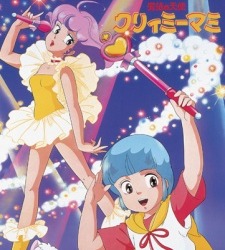
So what are the new elements added by the second-generation magical girl? As I see it, there are two: first, the ordinary girl and the magical girl are two distinct characters which require a visible transformation. As I said in the final paragraph of my first post, while the magical girl has always had to hide her abilities, only starting with this generation does she hide her identity behind another full-fledged persona. The opening credits of Mami show Yu and Mami’s faces spinning around like opposite sides of a coin. Creamy Mami is in fact even more separate than most other examples in the subgenre; not only does she look completely different from Yu, she is specifically described as six years older than her “normal” self. Again, this is the archetype of the pop idol given a fantastic spin; the “celebrity” is a different person from the “person.” (Think, for example, of Hannah Montana!) Connected to this first point, second, an emphasis on costume, pageantry, and physical transformation into a more glamorous self. This is also at least partly due to improvements in animation allowing for more impressive spectacle, but the creators certainly made good use of it. Mami is dynamic and colorful, obviously far more so than its black-and-white precursors. It is also more toyetic than previous magical girl shows, par for the course for a media mix show; Mami uses a magical compact and wand to transform, plastic replicas of which could be bought as accessories, and stuffed animal versions of her fairy companions were available as well. (To be fair, Mami was hardly the only series from this period to be merchandised so heavily.) To what degree the pageantry influenced the desire to make toys, or vice versa, I can’t say, but they certainly go hand in hand from this point on.
There are also elements of this generation that have become staples of magical girl series—the cute sidekicks, the magic trinkets—but I think those are not truly essential, or rather, that what is essential about them is included in my second point above. To put it simply, the second-generation magical girl is surrounded by more stuff—a wand, some talking cats, magical accessories—all of which add to the pageantry (not to mention the merchandise).
There’s another element which I don’t think is necessary for or specific to the second-generation magical girl, but which also deserves a mention: Mami and other shows are aimed at a slightly older audience than Akko-chan or Sally, and the characters are children who often have to navigate adult worlds. Mami is in the music business; the main character in Magical Emi is a young girl who participates in her family’s magic shows. Even in shows where the character is not specifically participating in an adult sphere, they still find themselves in the position of having to act like adults: in her very first episode, Persia tries out her new magic by transforming into a policewoman and tricking her friends. These characters have a child’s perspective on adult problems, and while they can sometimes help the adults in their lives, they are still often flummoxed by the mysteries of the grown-up world. I think this is largely a matter of changing pop-culture expectations, a recognition that older girls—relatively older, that is, pre-teens and teenagers—were watching these shows, and would want to see characters closer to their own age, or at least dealing with similar problems. Again, I don’t think this is a defining feature of this generation of magical girls, but it’s something that will come up in other series and which should be noted.
That covers the second generation of the magical girl subgenre! And boy, are my fingers tired. Join me for the third installment, in which we finally reach the series that would define “magical girl” in both Japan and the rest of the world, and which would leave an indelible stamp on the genre—and anime as a whole—that has lasted to today. You know the one I mean.
#magical girl#magical girl history#mahou shojo#creamy mami#studio pierrot#scsg!#persia the magic fairy#magical emi the magic star#pastel yumi the magic idol
117 notes
·
View notes
Text
Natsuiro no Nancy (“Nancy in Summer Colors”)
youtube
“Me, closing my eyes by the poolside—that’s the sort of image stuck on your mind. I want to try and graduate from being the girl that just trails after you.”
OR: A teenager over the summer.
koi kana Yes! koi ja nai Yes!
ai kana Yes! ai ja nai
kaze ga fuku tabi kimochi mo yureru sonna toshigoro ne
Is it love? Yes! Not love? Yes!
Is it true love? Yes! It’s not.
Each time the wind blows, my heart sways along with it—I’m just at that age
You & me splashing along the beach
Summer time
Only two of us along the beach
Summer time
PUURUSAIDO de hitomi wo tojiru
sonna watashi wo anata ki ni shiteru
anata no ato wo tsuiteku dake no
onna no ko kara sotsugyou shita mitai
If you love me natsuiro no koibito
If you love me natsuiro no NANSHII
kyounen to wa kuchibiru ga chigatteru…
Me, closing my eyes by the poolside—
That’s the sort of image on your mind
I want to try and graduate from
Being the girl that just trails after you
If you love me, summer lovers
If you love me, Nancy in summer colors
My lips have changed since last year…
koi kana Yes! koi ja nai Yes!
ai kana Yes! ai ja nai
kaze ga fuku tabi kimochi mo yureru sonna toshigoro ne
Is it love? Yes! Not love? Yes!
Is it true love? Yes! It’s not.
Each time the wind blows, my heart sways along with it—I’m just at that age
You & me splashing along the beach
Summer time
Only two of us along the beach
Summer time
aoi sora kara mabushii sunshine
yaketa karada ni JERASHII kamo ne
anata wa dareka ni koe kaketeru kedo
hontou no ai kidzuku toki ga kuru wa
If you love me natsuiro no koibito
If you love me natsuiro no NANSHII
sakki kara jikan sae tomatteru…
Dazzling sunshine coming from blue skies
Might be jealous of your suntanned body
You call out to some other girl, but
There’ll come a time when you’ll notice true love
If you love me, summer lovers
If you love me, Nancy in summer colors
From here on out I’ll make even time stop in its tracks…
koi kana Yes! koi ja nai Yes!
ai kana Yes! ai ja nai
kaze ga fuku tabi kimochi mo yureru sonna toshigoro ne
Is it love? Yes! Not love? Yes!
Is it true love? Yes! It’s not.
Each time the wind blows, my heart sways along with it—I’m just at that age
---
No real notes, but just a reminder that in Japanese, saying “Not love? Yes!” will mean “Yes, that’s right, it isn’t love” as opposed to in English where someone might answer “Not love? Nope, it’s not love.”
Also, natsuiro is literally “summer-colored” but here it’s more like “the summer version of Nancy”.
Anyway, this song, like many great 80s idol songs, was written as an ad jingle. Natsuiro no Nancy wormed its way into people’s heart advertising Coca-Cola with the slogan “Yes Coke Yes”, and became a cat-themed Y!Mobile ad in 2016 entitled Natsuiro no Nyancy (“Meowncy in Summer Colors”).
This song was also recorded by Kikkawa You for her cover album Vocalist? and by Terashima Yufu as a b-side for her single Watashi wo Ryokou ni Tsuretette
#Natsuiro no Nancy#Natsu Iro no Nancy#Hayami Yu#single: Natsuiro no Nancy#lyrics#translation#Lyricist: Miura Yoshiko#Composer: Tsutsumi Kyouhei#Arrangement: Mogi Yutaka#80s aidoru#aidoru soloist#old school aidoru#seasonal aidoru songs#release date: 04/01/1983#aidoru song covers#10s aidoru#Kikkawa You#cover album: Vocalist?#release date: 11/07/2012#Terashima Yufu#b-side#single: Watashi wo Ryokou ni Tsuretette#release date: 07/12/2017#iconic aidoru songs
3 notes
·
View notes
Text
A brief history about idols
So let’s start with a brief history about idols. The word Idol was taken from the 1964 french - italian film Cherchez l'idole. In the film there was a singer: Sylvie Vartan, who impacted Japanese culture with her je ne sais quoi: She was young, cute and musically gifted. Taking from the film’s title, the Japanese entertainment industry began to assign the term “aidoru” to singers who shared these traits, like Momoe Yamaguchi, who is today known as the legendary idol. In the 70’s, idols had a mystique aura, and were supposed to be enjoying a lavish lifestyle that most Japanese could only dream about. This was a lie.Behind the scenes, idols were overworked and mistreated by their producers. Which, continues to be an issue in the idol world.

As time passes by, idol image has changed drastically. In the 80’s, Seiko Matsuda and Akino Nakamori were branded as much closer to the general public, with the girls being more open about their lives, and basically ditching the whole glamour stitch in order to be seen as regular next door girls. These era, is commonly known as the golden age for idol, with a lot of solos and duos taking over TV, radio and live events. This will eventually fade out in the 90’s, with the public shifting to more “real” rock artist. And this is one of our actual important shifting points. It all starts with the band Sharan Q, a popular rock band led by Tsunku. Tsunku made an audition show to form one of the most successful idol acts: Morning Musume. Alongside this band were the girl trio SPEED, and the iconic boy band SMAP. This approach was compared to western pop bands such as the spice girls, backstreet boys or TLC, with multiple girls and boys dancing and singing in a song. However, the innovation that bring Morning Musume to the table is the concept of graduation, meaning that any of the girls could leave the group, and then new members would be introduced. This brings and never seen longevity to the idol group, with Momusu still being active, with a 22 year career under their wing. Of course none of the original members are left in the group, and following the band career gets a little complicated, but the new girls keep the same concept applied to them in 1997: Girls who could dance and sing, and give an impressive performance.
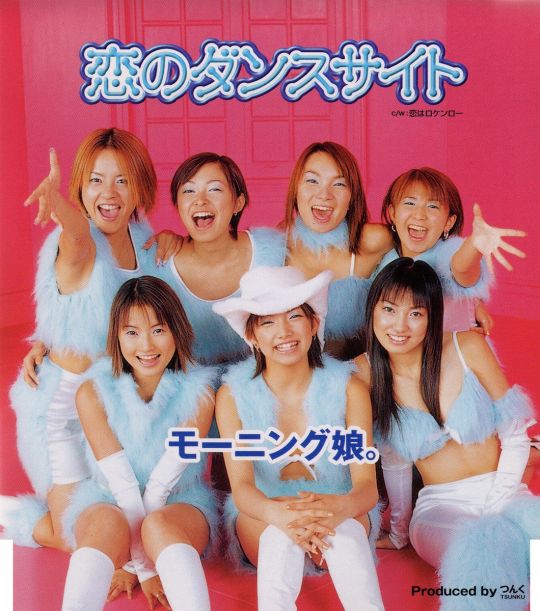
The other important shifting point in the idol industry was in 2004, the start of the empire of AKB48, a a girl group produced by AkiP, composed of 48 girls who performed regularly in a theatre in akihabara. The group had the slogan: Idols that you can meet! And it was true. The marketing strategy for AKB48 is, until today brutal. The girls are put against each other constantly in tournaments, so they can win a chance to record their parts in singles, and appear music videos. Tha fans need to vote for the girls, but in order to do it, they need to buy albums. If you’re lucky enough, you can get a ticket to meet your favorite member and shake her hand, in instances called fanmeetings. By now, AKB48 is the most prolific girl group in Asia, holding a record of the highest selling girl group in Asia, and the fifth highest selling girl group world wide. According to oricon, the group had sold 58 million copies of all their physical albums and singles, across a 15 year career.
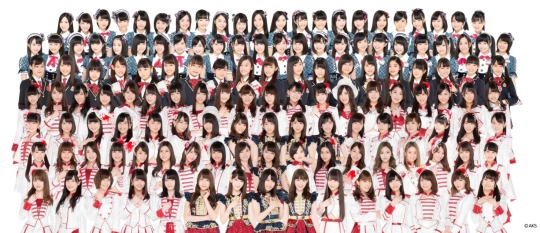
Right now, there is no other girl group to menace the AKB48 legacy. There have been close candidates, like Momoiro Clover Z, under the slogan: Idols you can meet right now!!. The now 4 pieced idol group, has a reputation due to their explosives live stages, and their immediate connection with otaku and nerd culture, with concepts that go from finding the nirvana, to space pirates in search of their long lost love (with multiple E.T. references in the music video). The natural extravaganza of the act has given the girl a chance to collaborate with other artists like the american classic rock band KISS, or Marty Friedman, the mythical guitarist from Megadeth.
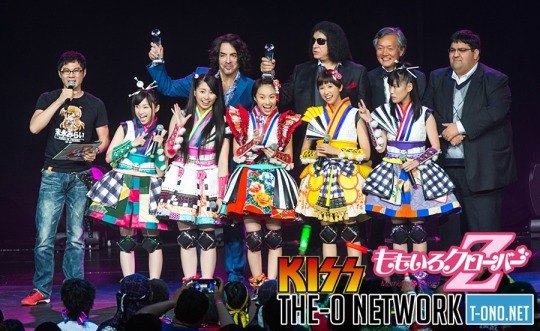
In any case, the idol story does not stop here. It continues in my video essay! I noticed that I couldn’t fit all the information that I considered important in the video, so I decided to do this long introductory post (and tried to keep it as brief as possible) to the world of Idols. Personally, a culture that I’m just obsessed with for the incredibly wilde crossover between genres that offers.
rocío rojas
1 note
·
View note
Photo
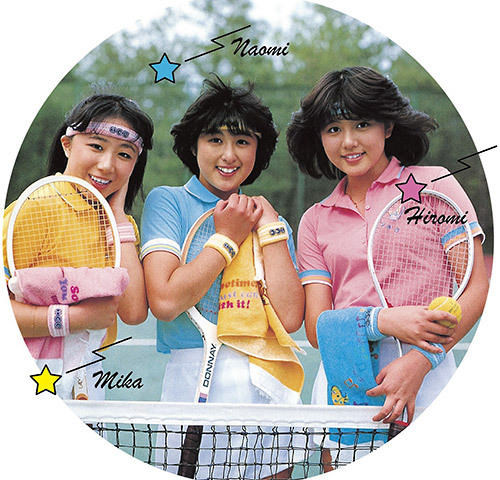
#can can#kyan kyan#きゃんきゃん#キャンキャン#idol#japanese idol#aidoru#vintage#japan aesthetic#80s anime#japanese fashion
4 notes
·
View notes
Text
A celebration of TOYCON's 18th year in the Asian Pop Culture Scene

The Philippine Toys, Hobbies and Collectibles Convention, better known as TOYCON PH, is celebrating 18 years of serving pop culture enjoyment to its fans both local and international. It is, simply put, the longest-running and premiere pop culture event in Asia.
Early this year, TOYCON PH presented a fresh visual identity, through a new logo, to cater to the growing millennial crowd, and also attract visitors from all over the world with a global perspective to promote the Philippines as the leading pop culture playground in Asia, that showcases Filipino creativity, innovativeness and talent through toys, games, entertainment and digital content.
TOYCON PH – Where Asia Comes to Play!
TOYCON’s new tagline indicates the direction of where it is going.
It is now an International event that will flex its muscle to further increase the international visitors that are coming.
This all means that a better and grander line-up of activities is expected for this year. These activities are guaranteed to give its enthusiastic followers and the casual fans more to enjoy in TOYCON.
TOYCON has had 17 years of excellent experience in making the Philippine pop culture scene the most dynamic and the most fan-centric experience in the region! It started the pop culture revolution in the country. And now it is capturing the heart of pop culture enthusiasts in the whole Asia Pacific region.
This year is the 18th year of the event, and through the years it has been adding value and uniting the different toy and pop culture communities in the Philippines.
TOYCON’s Exclusive Toys and merchandise
One of the things to anticipate this year are the exclusive toys, collectibles and merchandise that will come out of the event.
This year, there will be more exclusive toys that will come out in TOYCON. And if you are a toy collector, it will be one of those events that you can call heaven sent.
Headlining as the marquee TOYCON exclusive is the Zeta Manila Killa PH Colorway designed and created by Quiccs Maiquez, who was awarded Toy Designer of the Year and Toy of the Year in the recently held Designer Toy Awards in New York City.
In addition, the much-anticipated Jollibee Flocked variant Funko Pop will also exclusively be distributed by the Funko Funatics Philippines during the event this year. We also have Filipino-inspired toy exclusives of Tiny Ghost by Bim Toy, Dino by Ziqi Toys and the first release of the Batman Imperial Palace warrior vinyl toy by Mindstyle.
TOYCON’s Toy Designer Line-up Gets Bigger
When there are exclusive toys, not far behind are the big toy brands and toy designers. There will be more local and international brands and toy designers that will grace this year’s event.
Brands like Lego, Funko, Bandai, Good Smile, Hot Toys and XM Studios, along with internationally renowned toy designers: Ron English (the legendary godfather of street art), Quiccs, Wetworks, Anatoy, Yoii, Hariken, Creon Chkn Head, Happy Garaje, Jessica Emmett, Daniel Yu, Fanny Kao, Mumbot, Rusho Toys, Jwon, Kaze Studio, Messymaru, Mupa, Non World, Siam Ruf, Tangent and Too Natthapong will line up the event with their distinct brand of collectibles. These designers from all over the globe certainly get the art toy enthusiasts excited in all the international toy shows and certainly, art toy aficionados will get spoiled in this year’s event!
TOYCON’s International Influencers and Celebrity Guests
The era of the digital influencers is here. TOYCON, with our partner Pop Life Global, is giving the community a taste of the future and beyond. First up are influencers from the Pop Life’s Pro-Am Studios, which is in the business of making movies out of their studio and post-production facilities in China. They are slated to release five movies this year and next.
One highlight of this year’s FanXperience event will be the Battle Dance Champions featured in the Pop Life produced movie, No Dance, No Life. World-class dance will take over the FanXperience stage featuring talents such as Former Bboy of the Year: Bboy Morris, World of Dance 2019 Champions: The Kings, World of Dance Team of the Year: Academy of Villains, and The Creator of the dance style, Krumping, Tight Eyez.
The international artists are a staple of TOYCON. Through our partner, Pop Life Global, we have had guests from Game of Thrones, Pirates of the Caribbean, Power Rangers, Superman and X-Men, and other great franchises.
This year two guests confirmed to arrive are from the hit AMC series The Walking Dead. These are actors Michael Cudlitz, who played Sergeant Abraham Ford, and Steven Ogg, who played Simon and also plays Trevor in the hit video game Grand Theft Auto V.
TOYCON’s Sound Arena
We love music, who doesn’t? This year, fresh new talent will hit the stage of TOYCON with band performances and idol groups joining the fray. This TOYCON, you will cheer your heart out, guaranteed!
Up and coming bands Souldrift, Lila, The Lock Pickers, The Glass O, Project:Materia, Kanjiru, Asterysk, Lunar Rhythm, as well as fan favorites Aidoru Sozai, CH4U, and Pastel∞Mix will be performing at the TOYCON stage for its Music Festival.
TOYCON’s Comics and Gaming Exhibition!
TOYCON is also our country’s undisputed Comic Con with top-caliber comic book artists gracing the event.
The line-up this year includes:
Berlin Manalaysay: Creator of the well-loved cyborg, ‘Combatron’, one of the most well received characters in Funny Komics in 1992.
Ed Tadeo: A prolific Filipino comic book artist, colorist and inker for Marvel, DC, and Image Comics. Titles of his works in coloring and inking include: Wolverine, Silver Surfer, High Roads and District X.
Heubert Khan Michael: Former guidance councilor turned legendary comic book artist. Judged by Neil Gaiman himself, Hubert won 3rd place in the Philippine Graphic Fiction Awards back in 2010 and has been inking since then! Some of his awesome works include: Vampirella, Unstoppable, and The Owl.
Miguel Mercado: Miguel is a Cosplayer and Illustrator. Miguel has is known within the Comic Book community for his epic cover art for Back to the Future (2015), Buffy The Vampire Slayer (2019) and Over The Garden Wall (2017).
Harvey Tolibao: Harvey first got involved in the comics industry in late 2006 when he penciled and inked the twelfth issue of Dark Horse Comics' Star Wars: Knights of the Old Republic. He also did the art for Iron Man: Director of S.H.I.E.L.D., Psylocke, the Avengers and has also done some work for Top Cow and for DC.
Pol Medina Jr: Pol is a Filipino cartoonist best known for creating Pugad Baboy, a comic strip about a community of fatsos and a dog named Polgas, highlighting domestic life and the characters’ commentary on relevant societal issues and pop culture. Pol is the 2018 recipient of the TOYCON Pinoy Pop Culture Icon Award.
Raymund Bermudez: Filipino Comic Book Artist, Penciler and Cover Artist for DC Comics. Some of his notable works include: Justice League, Pathfinders and Lex Luthor.
Raymund Lee: Professional Digital Comic Book Colorist who is known for his painterly style and classic renditions of superheroes.
And finally, Steve Gan: One of the most accomplished Chinese-Filipino Comic Book Artists to date. Best known for co-creating the legendary comic book “Ang Panday” as well as Marvel’s “Star-Lord” and “Skull the Slayer”.
Another exciting comics-related news is that ABS-CBN will launch the Ravelo Komiks Universe in TOYCON 2019, the first ever unified comics universe in the Philippines,
with a legacy display of new merchandise for its prominent stable of heroes, Darna, Captain Barbell and Lastikman. Watch out for life-size statues of these character on display!
Other TOYCON 2019 Highlights
Exhibits from epic movies coming soon will make the TOYCON scene more engaging. Headlined by movies from Sony Pictures, Spider-Man: Far from Home, and Warner Brothers’ line-up of movie icons from the horror genre, the Annabelle doll from Warner Brothers upcoming Anabelle Comes Home, Pennywise the Clown from IT: Chapter 2 and Chucky from Reality Pictures’ 2019 adaptation of Child’s Play. Meet them up close, but don’t blink!
This year’s TOYCON will also feature a new fun zone, the Play Hub!
This is where fans of comics and gaming will find the young and upstart artists in the design, graphic and digital spheres come together to exhibit their craft and talents! The Game Developers Association of the Philippines (GDAP) will host TOYCON’s Gaming Conference, while the Animation Council of the Philippines will showcase more than 50 short films in the Theater Room.
TOYCON POPLIFE FANXPERIENCE will also be the stage for the unveiling of the biggest Batman statue in Asia, the 22-foot tall Imperial Palace Batman which is a likeness of the Dark Knight never seen before until now. Celebrating the 80th Anniversary of Batman, DC Collectibles has announced a collaboration with Pop Life Global and China’s Imperial Palace for a special series of figures featuring DC Comics characters in costumes themed after ancient Chinese warriors and soldier armors. This Batman statue is going to be one for the history books!
This year’s World Cosplay Summit Philippines (WCSPH) National Finals will also be held at TOYCON 2019, with Japanese Cosplayer Reika and WCSPH Alumni Ming Miho and 2018 Philippine Representative Team Sekai (Sergio Sta. Ana and Kai Raito) headlining this activity. Five cosplay pairs selected from parts of the country will compete for the right to represent the Philippines at the 2019 World Cosplay Summit in Japan.
Aside from these, TOYCON 2019 will host a number of activities such as a Mobile Legends gaming Tournament in partnership with InFlux TV, The TOYCON Cosplay KO Competition and bestow the Pinoy Pop Culture Icon Award, which honors the icons that made our Filipino pop culture heritage truly distinct and long-lasting.
TOYCON’s line-up of vendors and exhibitors also gets bigger and better every year with more than 300 merchandise booths of toys, pop culture memorabilia, apparel, collectibles and more, with more international brands coming to town.
TOYCON Pop Life FanXperience 2019 – It’s a Whole New Playground!
TOYCON PH and Pop Life FanXperience is proving indeed that it is the leading pop culture playground in the Philippines and in Southeast Asia. There will be more sights to share for your various channels and social media, engaging activities, shows and panel discussions, interactive brand activations, collectibles and merchandise, and YOU are definitely going to be a part of what will make TOYCON great this year!
TOYCON POPLIFE FANXPERIENCE happens on June 28-30, 2019 at the SMX Convention Center, Pasay City.
[The event is made possible by PLDT Home Fibr, MaxiCollector, Big Boys Toy Store, Filbars, Great Toys Online, Ano Toys, Arigatoys, Hobbiestock Collectibles, De La Salle College of St. Benilde, Kramer Toy Warden and main media partner, ABS-CBN. With thanks to our official residence partner, Tryp by Wyndham Mall of Asia Manila.]
So cheers for TOYCON’s 18th year and we hope you join us in this ground-breaking international event. Always check out the TOYCON website, Facebook, Twitter and Instagram accounts for more updates:
www.toyconph.com
www.Facebook.com/ToyconPH
www.twitter.com/PHToycon
www.instagram.com/PHToycon
0 notes
Video
💫Recorded a dance cover to UFO by Pink Lady today!! heres a sneaky peaky! 💫
This songs been stuck in my head for like a month now 😜👽💫!!
The full thing will be up on my channel next week! be sure and subscribe so you wont miss it 😘✨!
#ピンクレディー#jpop#kawaii#ufo#aidoru#youtuber#idol#aliens#youtube#classic jpop#dance youtube#dance cover#uchuu kei#pink lady#black idol#80s jpop#ufo dance cover#space babe#me#my outfits
1K notes
·
View notes